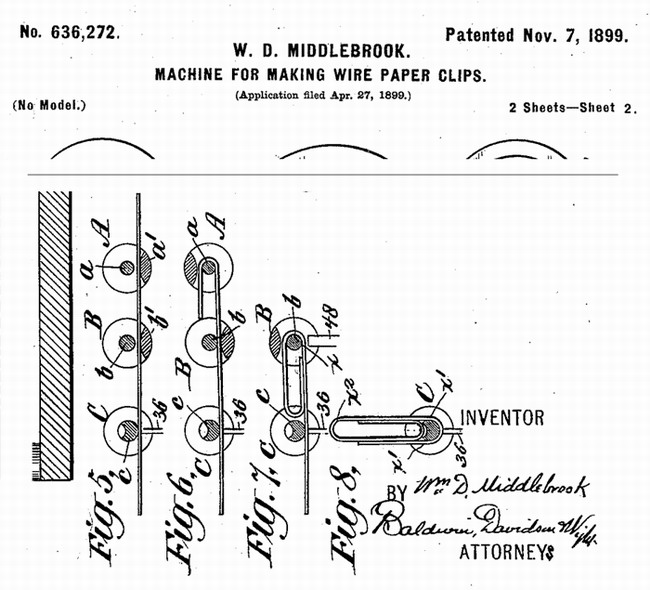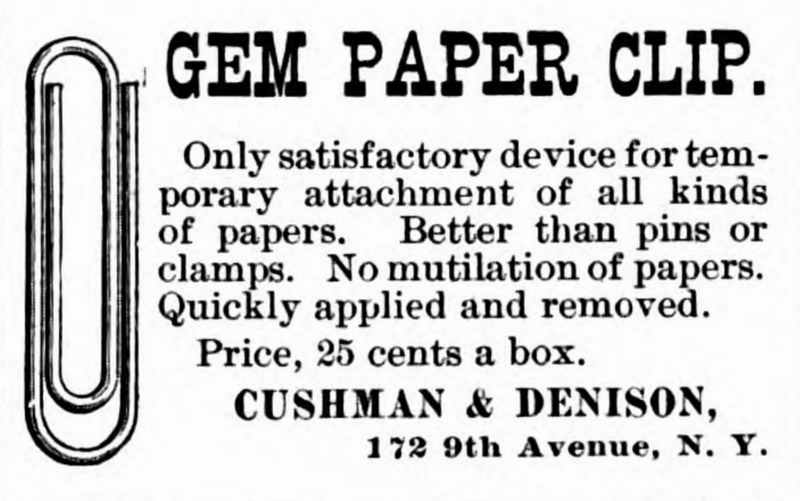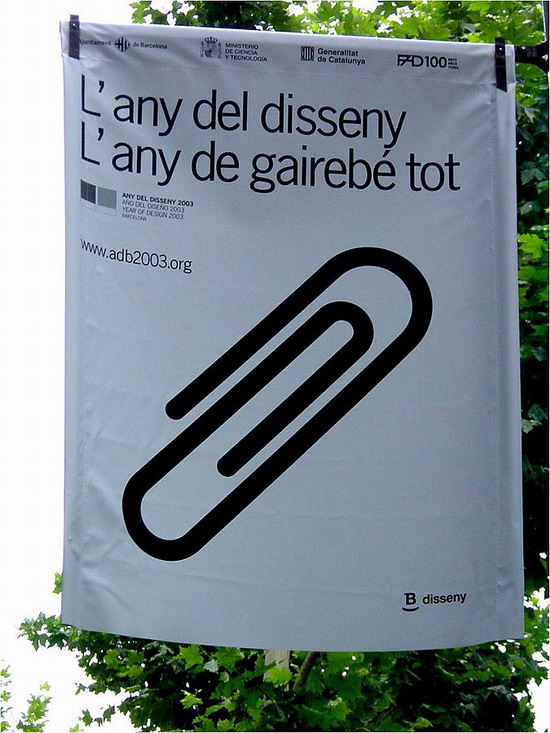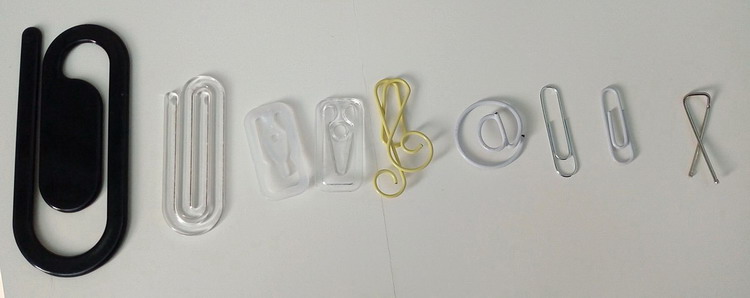- What Is A Paper Clip?
- What Are The First Paper Clips?
- Materials&Forms of Paper Clips
- Norway's Claim
- National Symbol
- Supplement from officemuseum.com
- Other Uses
1. What Is A Paper Clip?
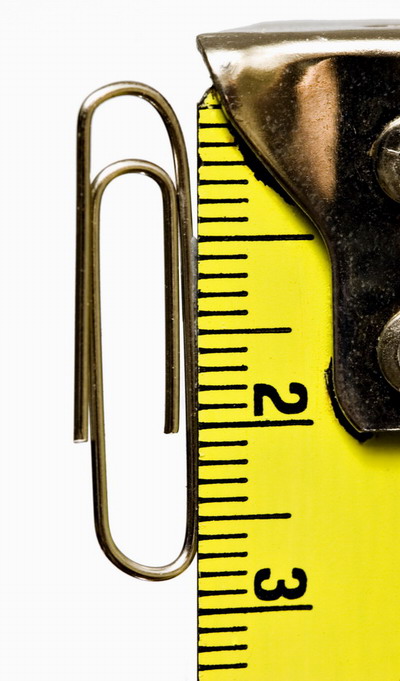
- A paper clip (sometimes "paperclip")is a continuous piece length of plastic wire or metal sheet that is used to hold pieces of paper together.
- 2. The History of Paper Clips
-
A paper clip is usually made of a thin wire formed into a shape that is wrapped in on itself. It can fasten two or more pieces of paper, or cards for season greetings, invitations together by pressure. Some other kinds of paper clips use two pieces. The types of wire paper clip and metal paper clip that are usually used were never patented. It was The Gem Manufacturing Company that first made the wire paper clips during the 1890s. The first time Gem was mentioned was in 1883, but historians do not consider this as the origin of making paper clips.[1] The first advertisement for the promotional purpose of paper clips was in August 1894.[2] The "Gem" name was firstly trademarked in the United States since 1904. The trademark paper work said that the paper clip had been sold since March 1892. There has been a rumor [3][4][5] that Herbert Spencer created and invented the paper clip. It is proved that the paper clip was well known and widely-used by 1899. A patent was given that year for a "machine to make wire paper clips" to William Middlebrook on April 27. The drawing in the patent shows a Gem paper clip.[6] There are many different kinds of paper clips. Some of them have pointy ends instead of round ones. Some have bent ends. This was done so that it is easier to put paper in. Some of them have wires with bumps that allow them to hold the paper better. Some paper clips are made to look good. They are sometimes in a triangle or a circle.[7] But in our collections, you can source out a lot of different paper clips formed into different themes and shapes: animals, fishes, plants, vehicles, tools, logos etc.
- 3. What Are The Different Types Of Paper Clips?
-
The original paper clip, as far as we know, is made of wire or plastic wrapped wire. For now, the materials are much more diversified. We can make wire paper clips into different-diameter wires: 1.0mm, 1.2mm, 1.3mm, 1.5mm etc. Also for plastic coating paper clip, the color could be also optional. We can customize the colors according to customers' requirements with a certain quantity: plastic-coat colors, sprey-paint colors in Pantone numbers, plating silver, gold, rose gold or multi-color plating etc.
It is the same with forms. Besides wire paper clip, we can also design and manufacture printing metal paper clips, decorative binder clips, metal hinge clips, slide binder bars...that can be all called paper clips in a larger sense.
- 4. Norway's Claim
-
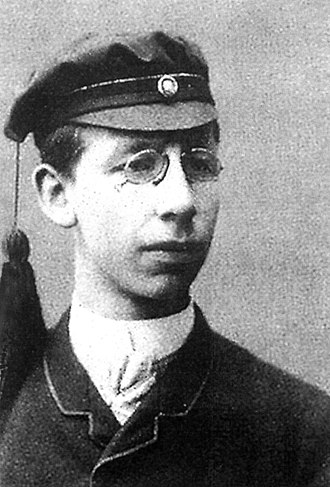
A Norwegian, Johan Vaaler (1866–1910), has also occasionally been considered as the inventor of the paper clip.[source?] He was given the patents in Germany[8] and in the United States[9] for a paper clip of a different design
After Vaaler died, some Norwegians made a myth that the paper clip was invented by a Norwegian genius. Dictionaries since the 1950s have said that Vaaler is the inventor of the paper clip.[10] Dictionaries in other countries sometimes say this now too.[source?]
Vaaler was probably given a patent in other countries because patent laws in the 1800s were not as tough as they are today.[11] Vaaler worked in a patent office, or place that deals with patents, and could have given himself a patent very easily.[12]
The patents that Vaaler held have since expired. The Gem paper clip was used around the world, including in Norway. His device did not work as well as the Gem version. This was because it was hard to put pieces of paper in it, and it did not look as good when there was paper in it.
- 5. National Symbol
-
The person who started the Norwegian paper clip myth was a person who worked for Norway's patent office. He visited Germany in the 1920s to get patents for some Norwegian inventions. He came across Vaaler's patent, and did not realize that it was not the same as the Gem paper clip.[13] In a pamphlet put out by the patent office in celebration of its first 50 years, he wrote about how Vaaler was the inventor of the paper clip.[14] This was put into many Norwegian encyclopedias after World War II.
The war helped make the paper clip into a national symbol. Some Norwegian patriots wore them on the outside of their clothing as a symbol of resistance to the German occupiers and local Nazi rulers when they were not allowed to protest. Soon, the Nazi's made wearing them illegal.[15]
The first Norwegian encyclopedia did mention it as a symbol of resistance, but did not call it a Norwegian invention.[16] According to the encyclopedia, the idea started in France.[17]
After the war, Norway believed the paper clip was a national symbol. Authors of books on the history of Norwegian technology used its status to make their stories bigger. The did not mention that Vaaler's clip was not the same as the Gem clip.[18] In 1989, a big paper clip, almost 7 meters tall was put up in a college near Oslo in honor of Vaaler. The monument is a Gem paper clip, and not the one that was patented by Vaaler. In 1999, 100 years after the German patent was accepted, Norway celebrated by making a postage stamp that had a paper clip on it. However, it was once again the Gem paper clip in the stamp. In 2005, there was a Norwegian biography written about Johan Vaaler, 'The inventor of the paper clip.'[19]
- 6. Supplementary info from officemuseum.com
-
What counts as a paper clip? For purposes of the discussion and timeline presented here, a paper clip is a flat or nearly flat piece of metal that slides over an edge of a set of papers and holds the papers together without being bent or pinched by the user and without piercing the papers. A large majority of different paper clip models were made by bending single pieces of resilient spring steel wire. Three others were stamped from sheet metal (Eureka, Sheet Brass Gothic, Proco) and another four (Angell, Utility, Vise, Acme Correspondence) were made by folding small pieces of resilient sheet steel. One (Nifty) was made by bending a wire into a spiral and then flattening it. Recently some paper clips have been made of plastic, but these are not covered here.
During the 19th and early 20th centuries, the term "paper clip" was also used to refer to a spring loaded clip that was generally two or more inches long. This type of clip was also called a "letter clip." We consider these devices on our web page dealing with small filing devices.When were paper clips introduced? The first paper clip was patented by Samuel B. Fay in 1867. This clip was originally intended primarily for attaching tickets to fabric, but the patent recognized that it could be used to attach papers together. We have found no advertisement for, or other mention of, the Fay design until 1896. In 1896, the American Stationer announced that D. S. Gorman was the New York, NY, distributor for a "new paperclip," named "Clinch;" this clip used the Fay design. Also in 1896, the Cinch Clip Co., Buffalo, NY, was identified as the manufacturer of a paper clip named "Cinch," which also used the Fay design. It therefore appears unlikely that paper clips with the Fay design had significant, if any, sales prior to 1896. However, beginning in the late 1890s and for decades thereafter, the Fay design was widely advertised under many brand names for use in fastening papers. In 1918, the brand name "Fay" was used by the American Clip. Co. for a paper clip with the Fay patent design. A second paper clip design was patented by Erlman J. Wright in 1877. This clip was advertised at that time for use in fastening newspapers. A third paper clip was patented by Frank Angell in 1889.
The Gem paper clip, which was never patented, but which became by far the best selling paper clip in the U.S., was introduced in 1892 and has been advertised since 1893. In 1904, when Cushman & Denison applied for a trade mark for the Gem clip, the company stated that it had used the Gem brand name for clips since 1892. And in a 1922 advertisement for the Gem paper clip, Cushman & Denison stated, "Thirty years ago we placed on the market the first 'Gem' Clip."

Cushman & Denison Advertisement for Gem Paper Clips, 1922Speculation that the Gem paper clip originated in Britain by the early 1880s is incorrect. This speculation is based at least in part on references to "Gem Paper Fasteners" in publications dating from 1883 and 1884; these publications did not contain either illustrations or verbal descriptions of these fasteners. However, the Early Office Museum has found an 1881 publication with an illustration that shows that Tower's Gem Paper Fasteners were staples with legs that were bent toward each other after they were manually inserted through slits cut in papers. They were not paper clips.

Advertisement for Gem Paper Fasteners, Britain, 1881When did paper clips come into widespread use in offices? A patent application filed at the end of 1896 indicated that a number of different paper clips were in use. A flood of paper clip patents were issued beginning in 1897. A 1900 trade publication stated that "The wire clip for holding office papers together has entirely superseded the use of the pin in all up-to-date offices." (Business, March 1900, p. 173) This evidence indicates that paper clips came into widespread use in U.S. offices in the late 1890s.
What is included in the paper clip time-line below? The Early Paper Clip Gallery below identifies every paper clip that we are aware of that has a patent date before the end of 1902 plus every one for which we have found an advertisement, box, or example (but excluding modern plastic and decorative paper clips, e.g., ones in the shape of a bone or star). Many additional designs that are not shown here were patented. Presumably most of these were not advertised widely or for long, if at all. In the case of paper clips patented before the end of 1902, if we do not have an advertisement or box that tells us the brand name of the clip, we have identified the clip using the patent holder's last name in italics.
We did not include paper clips that were patented after 1902 unless we could find evidence that they were produced. We used that cutoff date because 13 paper clip patents were awarded in 1903, 10 of them to one inventor, George W. McGill. Of the latter 10, only three appear to have been produced (Banjo, Ring, Improved Gem).
Where did the Early Office Museum obtain the information on this web page? The information on this page is based on our review of patents, early trade publications, artifacts, and other primary sources. As a result, unlike much of the information on the history of the paper clip that is available on the internet, the information presented here is accurate. The Early Office Museum is grateful to Kenneth R. Berry for sharing his patent and trademark research on paper clips.
Would you like to swap, sell, donate, or purchase early paper clips? If the Early Office Museum has an example of a particular paper clip, we put an "X" at the end of the text in the box in the right-hand column in the pertinent row of the table below. We have duplicates of most of those, but not all. We would be happy to swap our duplicate early paper clips for ones we do not have. We will also sell duplicates, and we will purchase or accept donations of ones we do not have. We are also interested in photos/scans of paper clips, boxes, and advertisements (if possible dated) that we do not have to post on the Museum web site with a credit to you. Please email the Curator: eomcurator, followed by @, followed by hotmail.com with the subject line "paper clips".
Early Paper Clip Gallery
Image Brand Name
Other Brand Names
Dates
The date in Bold font was used for the chronological order.Additional Information
An X at the end of this box indicates that the Museum has an example of this clip.
Fay Paper Clip
Amneco (1917-21), C (1910, 1918), Chicago,
Cinch (1896), Climax (198[fix]-22), Clinch (1896, 1918),
Cyclone (1920),
Fay (1918), Jiffy, New York,
Philadelphia, Queen City, Simplex (1918),
Uneedit (1928), West
Patented 1867
Advertised 1896 (as Clinch)-1961 The patent awarded to Samuel B. Fay described this clip as a ticket fastener to be used, in lieu of a pin, to fasten tickets to fine fabrics. The patent noted that the clip could be used to attach a paper ticket to another piece of paper.
The patent awarded to Samuel B. Fay described this clip as a ticket fastener to be used, in lieu of a pin, to fasten tickets to fine fabrics. The patent noted that the clip could be used to attach a paper ticket to another piece of paper.
X
Wright Paper Clip
Patented 1877
Advertised c. 1877The patent awarded to Erlman J. Wright stated that the clip was designed for "fastening together loose leaves of papers, documents, periodicals, newspapers," in lieu of sewing, "pointed bent-over paper fasteners," or eyelets. The clip was advertised as a newspaper clip. 
Angell Paper Clip
Patented 1889The patent for this clip is titled "Book-Leaf or Paper Holder." However, the patent description states that one of its uses is to "hold together two or more pieces of paper--as, for instance, a letter and check received together." The patent states that this item consists of "a piece of flat metal bent or folded to form two lips of unequal length, the shorter lip curved upward and the longer lip flat." The scan to the left shows the shorter, curved lip (the right side of which bulges toward you as you view the scan) in front of the longer, flat lip.
X
Utility Paper Clip
Patented 1895
Advertised 1890-1900Made from sheet metal by
O. W. Smith Manufacturing Co. Detroit, MI.
and subsequently Stationers' Mfg. Co. Detroit, MI.
Also distributed by Library Bureau,
Boston, MA
XGem Paper Clip
Glide, Superior (1920), Lightning (UK),
Facile (UK), Fixum (Germany), Kimhar
Not patented
Advertised 1893-Present
In 1904, Cushman & Denison obtained a trademark for "Gem" used in connection with paper clips. The announcement of the trademark stated "Used since March 1, 1892," so it is probable that the Gem Paper Clip was introduced on that date.
August 1894 ad. All rights reserved.
The earliest known Gem paper clip advertisement, which was discovered by the Early Office Museum, is in the September 1893 issue of The American Lawyer. The seller was Cushman & Denison.
XPatent Spring Clasps
Advertised 1893-1900Distributed by the Library Bureau, Boston, MA, which claimed that these spring clasps "largely supersede pins, staples, paper fasteners, rubber bands, clips, and all devices for fastening papers or cards together." 
Image from online article by Alan Walker, Processing Archivist, National Archives, College Park, MD.
X
Eureka Clip
Farmer
Patented 1894
Advertised 1897-30
(The brand name Farmer comes from the name of the inventor, George P. Farmer)
Made from sheet metal, not bent wire, by Consolidated Safety Pin Co., Bloomfield, NJ.
X
Niagara Paper Clip
Patented 1897
Advertised 1897-1950Niagara Clip Co., New York, NY
Standard clip is small.
Larger version sold as Giant Niagara Clip.
Add image from 1904 System X
Simplex Clip
Patented by Reeve Apr. 20, 1897
Advertised 1897"Holds securely from one to twenty thicknesses."
Simplex Specialty Co., Ltd.
Philadelphia, PA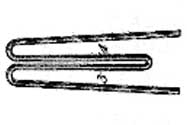
Cole Paper Clip
Patented 1897The patent indicates that a number of bent-wire paper clips were already in use when the application was filed in December 1896. "Previous to my invention various forms of bent-wire clips have been used. Some of them do not grip the articles with sufficient force, while others endanger a tearing. Others are difficult or inconvenient, and others still are clumsy or have some portion projecting transversely to the plane of the papers." 
Perfection Paper Fastener
Patented 1898
Advertised 1898-1900, 1916-20Made by M. P. & J. R. Schooley, Homestead, Pa.
The patent states: "I am aware that prior to my invention paper-clips have been made somewhat similar to mine in their general idea." X
Schooley Paper Fastener
Patented 1898.
Columbia Paper Clip
Scientific
Advertised 1899Columbia Manufacturing Co.
Buffalo, NY
Successor to the Scientific Clip Co.
Clipper Paper Clip
Duplex
Patented 1899
Advertised 1900-11, 1921-23Clipper Mfg. Co., Long Island, NY
In 1903, the Clipper paper clip was available in brass or steel.
X
Daisy Paper Clip
Patented 1899
Advertised 1908. 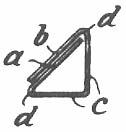
Vaaler Paper Clip
Patented 1900 (Germany), 1901 (US)Image is one of several
in the 1901 US patent.
Vaaler, who was Norwegian, is commonly but incorrectly given credit for invention of the paper clip. His designs were neither first nor important. There is a large Gem paper clip statue in Norway. Norway might consider giving it to the U.S.
Konaclip Paper Clip
L.B. Expansive
Patented 1900
Advertised 1904-10, 1917 (L.B. Expansive) X
X
McGill Paper Clip
Patented 1900. 
Octo Fastener
Advertised 1901-10, 1917-18Attleboro Stock Co., New York, NY (1903-04)
American Clip Co., Long Island City, NY
"A pin, paper clip and paper fastener in one."
1903 ad X
Wright Paper Clip
Patented 1901. 
De Long Paper Clip
Patented 1901The inventor of this paper clip, Frank E DeLong, and his brother owned the DeLong Hook & Eye Co., Phildelphia, PA. The company's main line of business was hooks and eyes for the garment industry. During 1912-21, this company sold the Twin Grip paper fastener based on a 1908 patent. 
Mowen Paper Clip
Patented 1901. 
Ideal Paper Clip (very small) or Clamp (larger)
Triumph
Patented 1902
Advertised 1903-PresentCushman & Denison Mfg. Co.,
New York, NY
ACCO Brands, part no. ACC-72130, as of 2013.
X
Multiple Grip Paper Clip Style E
Advertised 1902Meyercord-Batterman Co.
Chicago, IL
"An inexpensive clip that grips flat in four places.
Does not slide under papers"
Mussinan Paper Clip
Patented 1902. 
Cox Paper Clip
Patented 1902. 
Whitcomb Clip
Ringklip
Advertised 1902-04 (Whitcomb, US), 1910 (Ringklip, Europe)
No longer produced 1910 (Whitcomb, US)
The Wire Novelty Co., Holyoke, MA (1902-04)
X
Banjo Paper Clip
Improved Gem No. 2, Banjo Gem
Patented 1903 by George W McGill
Advertised 1909-41Cushman & Denison Mfg. Co.
X
Ring Paper Clip
Rinklip, Circle
Patented 1903 by George W McGill
Advertised 1905-Present

A.A. Weeks Mfg. Co., New York, NY (Ring, 1905)
Cushman & Denison Mfg. Co (Ring).
The Rinklip advertised in 1905 had a flat top.
X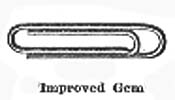
Improved Gem Paper Clip
Improved Gem No. 1, Lipgrip (UK), Facile with Lip (UK)
Glid-don (Australia), Clipper (UK)
Patented 1903 by George W McGill
Advertised 1909-24Cushman & Denison Mfg. Co. 
X
Weis Paper Clip
Eureka, Star, Triangle
Patented 1904
Advertised 1903-41Weis Binder Co. (1905)
During 1904, the US Patent Office
issued three patents for paper clips
with essentially this same design.
X
Common Sense Paper Clip
Patented 1904
Advertised 1904-25Jackson Mfg. Co., Jackson, MI.
Book-Keeper Publishing Co., Ltd., Detroit, MI (1905)
X
Owl Paper Clip
Regal, Peerless, Supreme
Advertised 1905-Present
Owl Supply Co., Boston, MA
ACCO Brands, part no. ACC-72130, as of 2013.
X
Weis Herculean Reversible Paper Clip
Marketed 1905 ~ Advertised 1907-10, on market 1918Weis Binder Co., Toledo, OH (1905)
Weis Mfg. Co.
Mogul Paper Clip
Patented 1906
Advertised c.1906, 1908-10, on market 1918Clipper Mfg. Co.
As of 2016, being reproduced with thin brass wire.
Improved Niagara Paper Clip
Same 1897 patent as the Niagara Paper Clip above
Advertised 1908-1950Niagara Clip Co., New York, NY
X
Hold-Fast Paper Clip
Holdfast
Advertised 1909-10, on market 1918Cutler-Tower Co., Boston, MA 
Elastik Klip
Advertised 1910Tower Mfg. Co. catalog, 1910.
Described as a "corner clip" (American Stationer, Jan. 1, 1910)
Dennison Paper Clip
Advertised 1910, 1918 (on market), 1921 (clearance sale)
Illustrated in Webster's New International Dictionary 1934.Dennison Mfg. Co.
X
Standard Paper Clip
Advertised 1910-41Cushman & Denison Mfg. Co.
X
Wing Paper Clip
Advertised 1915, on market 1918
Courtesy of Cornelia Moyer
Wing Paper Clip Co., Philadephia, PA
X
Improved Triangle
Patented 1917
Advertised 1923-25
X
Little Gem Paper Clip
On market 1918
Lupo paper clip (Germany)

Little Gem paper clip with lip, Germany, marketed 2013
X
Vise Paper Clip
Patented
Advertised 1918-50 (Graffco), 1928 (Cook's Burro), 1974 (Burro)Vise Clip Co., Boston, MA
Graffco Vise Clip Co., Boston, MA (1918-50)
X
Ezeon Paper Clip
Handi-Grip, Imperial, Rapid,
Universal, Victory
Patented 1920
Advertised 1918-89
X
Victory Paper Clip
Patented 1920
Advertised 1921-22J.F Ryan & Co., New York, NY 
Collette Paper Clip
Frictioned
Patented: Collette 1921
Including all brands, advertised 1924-40
This type of clip had many equi-spaced perpendicular serrations on the long sides only, not on the ends.
Serrations are designed to hold papers securely.Collette Mfg. Co., Amsterdam, NY
X
Marcel Gem Paper Clip
Saspraude (Latvia), Savarzeles (Lithuania)
Patented 1924
Marketed 1931-93 (confirm. 1955-61 confirmed)
This type of clip had fewer indentations than the Collette-type clipsNoesting Pin Ticket Co., New York, NY 
Non-Skid Gem Paper Clip
Dandy Gem, Gripit, Standard Gem
Patented: Non-Skid 1927, Dandy 1927, Gripit 1930
Trademark: Dandy (Noesting) 1923 (renewed 1943)
Advertised 1936-61, 1974 (Standard Gem), present
This type of clip had many equi-spaced perpendicular serrations all along the wire, not just on the long sides.
Serrations are designed to hold papers securely.
X
Perfected Gem Paper Clip
Perfect, Perfect Gem, Gothic, Gothic Gem, Spear,
Clipper (England), Trikla (Germany)
Patented 1934
Advertised 1937-Present
Widely used on European continent. 
X
Nifty Paper Clip
Kurly Klip, Spiral, Clipiola
Patented 1936 (Nifty), 1939 (Kodye Kurly Klip)
(Similar design patented 1907)
Advertised 1937-Present
The shapes of the spirals vary among brands.
 .
.
Left: Kodye Kurly Klips. Right: Clipiola.
X
Acme Correspondence Clip
Glide-On Paper Clip
Acme: Advertised 1950
Glide-On: Apparently marketed 1993-94
Glide-On: Production ended in 1994-95
Acme did not have the small indentations that the Glide-On (see images) has. X
X
Rapid Gem Paper Clip 
Made in USA
XVee-Clip
Marketed by 1966 (pre-ZIP code)
Majestic Staple Co., Brooklyn 6, NY
Radia Paper Clip (France)
Sava (France), Polar (Germany), Ckpenky (Latvia). 
Unidentified Paper Clip A Similar to diagram in US Patent No. 2,324,929 issued to Willis A. Jennings, 1943 

Unidentified Paper Clip B . 
Unidentified Paper Clip C 
Paper clip, Serbia, 2008
Unidentified Paper Clip D We infer this is likely to be a paper clip because on two
separate occasions we found one in a mixed batch
of antique/vintage paper clips.
X
Unidentified Paper Clip E We infer this may be a paper clip because
we found one in a mixed batch
of antique/vintage paper clips.
X
Unidentified Paper Clip F We infer this may be a paper clip because
we found one in a mixed batch
of antique/vintage paper clips.
X
Sheet Brass Gothic Paper Clip
Germany. 
Proco Paper Clip
Europe
Courtesy of H A M Stumpel
X
Sheet Metal Advertising Paper Clips
Netherlands
We have misplaced the name of the person in the Netherlands who donated these.
X
Sheet Metal Advertising Paper Clip
NetherlandsX Additional paper clips are listed by name but not illustrated in Who Makes It and Where: The Stationers' Book of Knowledge, 1918-19, Andrew Geyer, Inc., New York, copyright 1916. Also, "You are Cordially Invited to a Preview of the Emanuel Fritz Paper Clip Collection at the Smithsonian Institution, Washington, D.C.," American Collector, July 1973, contains photographs of portions of several paper clips that are not included above. Because the complete clips are not visible, we are unable to match them to patent diagrams.
- 7. Other Uses
- Paper clips are usually made out of wires in different diameters (A normal paper clip is usually in ø1.0-1.2mm wire). A paper clip is a useful accompaniment when you are working with many things, like computers, scrapbooks, or accounting books etc. It is also an interesting miniature bookmark when doing some reading. The metal wire can be easily found or made straight with a little bit of work. Some things have buttons that cannot be reached by fingers if the people who make the device do not want users pressing them accidentally. Most CD-ROM drives have small buttons like this to eject the CD-ROM if there is not any power. A paper clip bent into a 'U' shape can be used to create a short circuit to start a computer if there is no power button.
For more information, you could also check out the pages as below:


